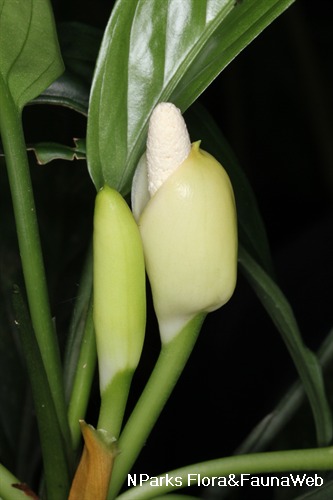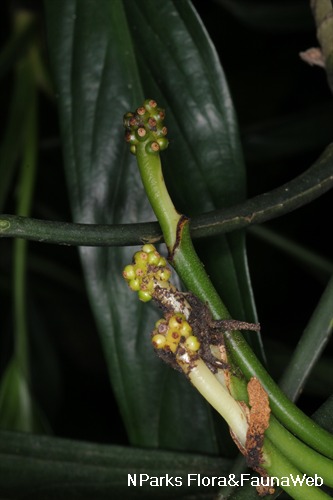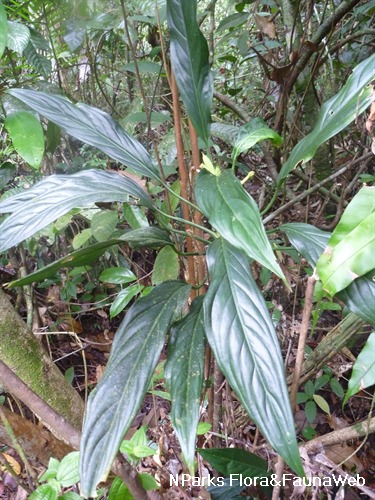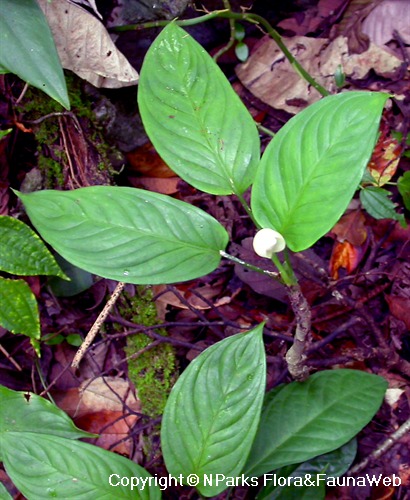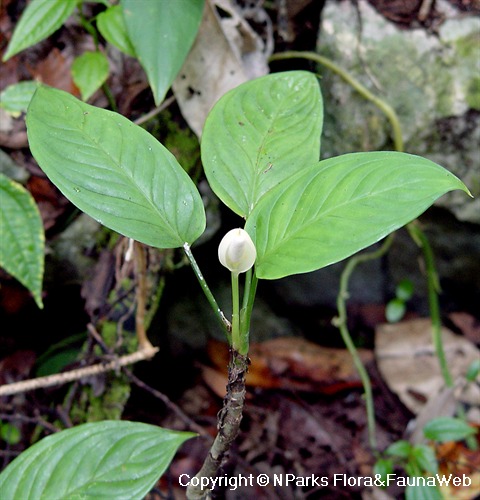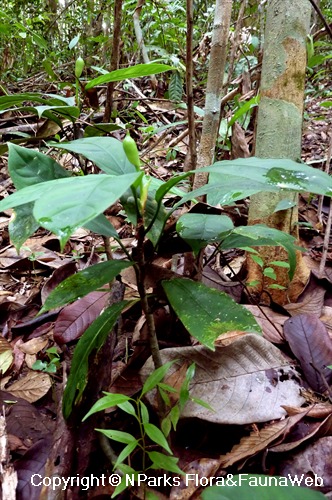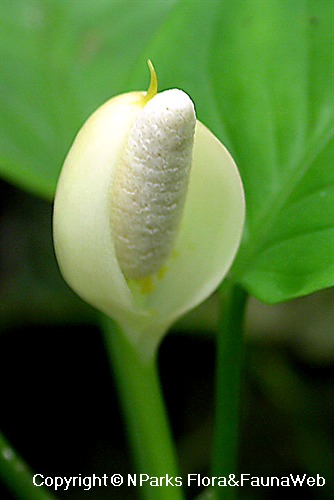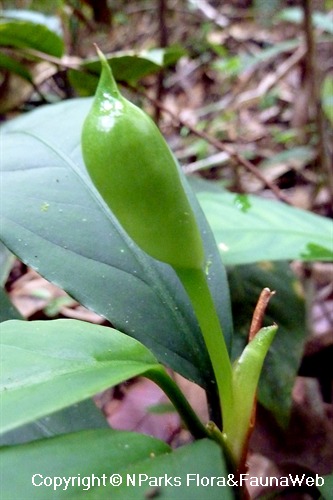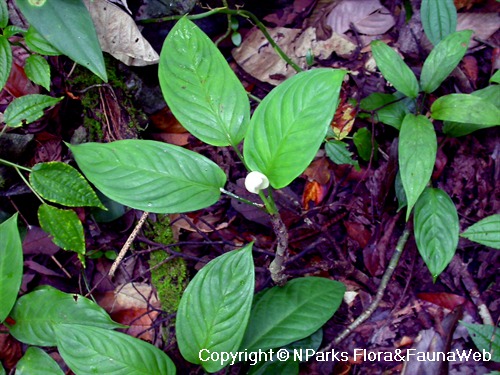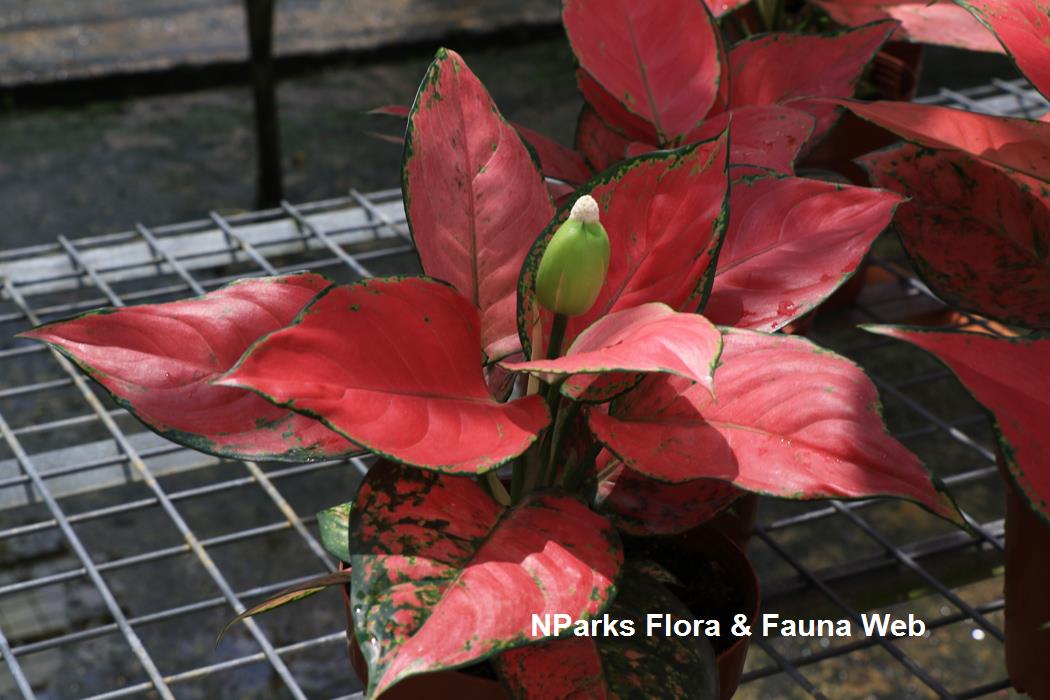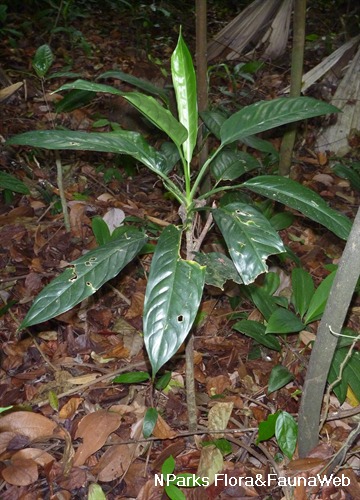
Back
Aglaonema simplex (Blume) Blume
| Family Name: | Araceae |
| Synonyms: | Aglaonema alpinum Elmer, Aglaonema angustifolium N.E.Br., Aglaonema angustifolium Ridl. var. undulatum, Aglaonema birmanicum Hook. f., Aglaonema borneense Engl., Aglaonema brevivaginatum Alderw., Aglaonema elongatum Alderw., Aglaonema emarginatum Alderw., Acontias fallax Schott ex Engl. in A.L.P.de Candolle & A.C.P.de Candolle, Aglaonema grande Alderw., Aglaonema latius Alderw., Aglaonema longicuspidatum Schott, Aglaonema malaccense Schott, Aglaonema nicobaricum Hook.f., Aglaonema nieuwenhuisii Engl. ex Alderw., Aglaonema pierreanum Engl., Aglaonema schottianum Miq., Aglaonema schottianum (N.E.Br.) Engl. f. angustifolium, Aglaonema schottianum Engl. var. brownii, Aglaonema schottianum Engl. var. genuinum, Aglaonema schottianum (Schott) Engl. var. malaccense, Aglaonema schottianum Engl. var. winkleri, Aglaonema siamense Engl., Aglaonema simplex (N.E.Br.) Jervis f. angustifolium, Aglaonema simplex Alderw. f. inaequale, Aglaonema simplex (Hook.f.) Jervis f. nicobaricum, Aglaonema simplex (Engl. ex Alderw.) Jervis f. nieuwenhuisii, Aglaonema simplex Alderw. f. typicum, Aglaonema subarborescens Alderw., Aglaonema subfalcatum Engl., Aglaonema tenuipes Engl., Caladium princeps Kunth, Caladium simplex Blume, Scindapsus tonkinensis K.Krause |
| Common Name: | Malayan Sword, Borneo Sword, Chinagreen, Sumpuh Bulan, Sumpuh Kering, Penggeheh, Wetune, 常青粗肋草 |
Name
Classifications and Characteristics
| Plant Division | Angiosperms (Flowering Seed Plants) (Monocotyledon) |
|---|---|
| Plant Growth Form | Herbaceous Plant |
| Lifespan (in Singapore) | Perennial |
| Mode of Nutrition | Autotrophic |
| Plant Shape | Shrubby |
| Maximum Height | 0.2 m to 1.2 m |
Biogeography
| Native Distribution | Southern Myanmar, Thailand, Sumatra, south to Peninsular Malaysia, Singapore, the Philippines, Borneo, Java, and Sulawesi |
|---|---|
| Native Habitat | Terrestrial (Primary Rainforest, Secondary Rainforest, Monsoon Forest, Freshwater Swamp Forest) |
| Preferred Climate Zone | Tropical, Sub-Tropical / Monsoonal |
| Local Conservation Status | Native to Singapore (Vulnerable (VU)) |
Description and Ethnobotany
| Growth Form | It is a herb, 15–120 cm tall, with straight stems. It is easily recognized by its dense crown of narrowly oblong to linear lance shaped, green leaves with pointed tips. |
|---|---|
| Foliage | Its alternate, stalked, densely and spirally arranged leaves have leathery leaf blades that are green to dark green, veins sunken, narrowly oblong, narrowly oval to lance-shaped, occasionally linear, oval or egg-shaped, ending abruptly or gradually into a sharp tip, and 10–35 by 1.9–25 cm. |
| Flowers | Its erect flowering shoot is enclosed within a light green to whitish petal-like leaf that ends abruptly with a sharp tip, 2.3–6.5 cm long. Species is monoecious, with separate female and male flowers located on different parts of the spadix. |
| Fruit | Its fruits are oval, red in colour when ripe, and 1–1.7 by 0.5–0.8 cm. |
| Habitat | It grows in primary and secondary forests, along rivers, streams and in wet areas. It occurs locally in Bukit Timah Nature Reserve, forests around MacRitchie Reservoir and in Mandai, Singapore Botanic Gardens Jungle and Nee Soon Swamp Forest. |
| Associated Fauna | Its flowers are insect-pollinated and its fruits are probably bird or mammal dispersed. |
| Cultivation | Relatively slow-growing. Prefers moist soils, tolerant of waterlogging. It can be propagated by stem cuttings and seeds. |
| Etymology | Greek aglos, bright, Greek nema, thread, possibly referring to shiny appearance of the stamens; Latin simplex, single, unbranched, referring to the single stemmed habit of this species |
| Ethnobotanical Uses | Medicinal: Leaves pounded in coconut oil and rubbed on body of women in labour to speed up delivery and as a pain relief. Root decoction used to treat fever and edema (swelling of soft tissues due to abnormal accumulation of fluid below skin or in body cavities). Others: The plant has horticultural potential as an indoor ornamental plant. |
Landscaping Features
| Landscaping | This herb is suitable for planting in shaded and wet areas of parks and large gardens. Its dense, attractive green leaves add volume and diversity to the landscape. |
|---|---|
| Desirable Plant Features | Ornamental Foliage |
| Landscape Uses | Interiorscape/ Indoor Plant, General, Riverine, Parks & Gardens, Small Gardens, Terrarium |
| Thematic Landscaping | Water Garden, Naturalistic Garden |
Fauna, Pollination and Dispersal
| Pollination Method(s) | Biotic (Fauna) (Carrion Insects (Carrion Fly, Carrion Beetle)) |
|---|---|
| Seed or Spore Dispersal | Biotic (Fauna) |
Plant Care and Propagation
| Light Preference | Semi-Shade, Full Shade |
|---|---|
| Water Preference | Lots of Water, Moderate Water |
| Plant Growth Rate | Slow |
| Rootzone Tolerance | Easy to Grow, Fertile Loamy Soils, Waterlogged Soils (Drains Site) |
| Maintenance Requirements | Moderate |
| Pruning | Cane-like stems can be pruned when they get elongated, & used as cuttings. |
| Propagation Method | Seed, Stem Cutting |
Foliar
| Foliage Retention | Evergreen |
|---|---|
| Mature Foliage Colour(s) | Green |
| Mature Foliage Texture(s) | Glossy / Shiny, Raised / Sunken Veins, Thick, Leathery |
| Foliar Type | Simple / Unifoliate |
| Foliar Arrangement Along Stem | Alternate, Rosulate / Rosette |
| Foliar Attachment to Stem | Petiolate |
| Foliar Shape(s) | Non-Palm Foliage (Lanceolate, Elliptical, Oblong, Oval) |
| Foliar Venation | Pinnate / Net |
| Foliar Margin | Entire |
| Leaf Area Index (LAI) for Green Plot Ratio | 3.5 (Shrub & Groundcover - Monocot) |
Non - Foliar and Storage
| Stem Type & Modification | Herbaceous |
|---|---|
| Root Type | Underground (Fibrous Root) |
| Specialised Storage Organ(s) | Underground (Rhizome) |
Floral (Angiosperm)
| Flower & Plant Sexuality | Unisexual Flowers , Monoecious |
| Flower Colour(s) | Cream / Off-White, White |
|---|
| Flower Grouping | Cluster / Inflorescence |
| Inflorescence Type | Spathe & Spadix |
| Flowering Habit | Polycarpic |
Fruit, Seed and Spore
| Mature Fruit Colour(s) | Red |
|---|---|
| Fruit Classification | Simple Fruit |
| Fruit Type | Fleshy Fruit , Berry |
Image Repository
Others
| Master ID | 29431 |
|---|---|
| Species ID | 3740 |
| Flora Disclaimer | The information in this website has been compiled from reliable sources, such as reference works on medicinal plants. It is not a substitute for medical advice or treatment and NParks does not purport to provide any medical advice. Readers should always consult his/her physician before using or consuming a plant for medicinal purposes. |

